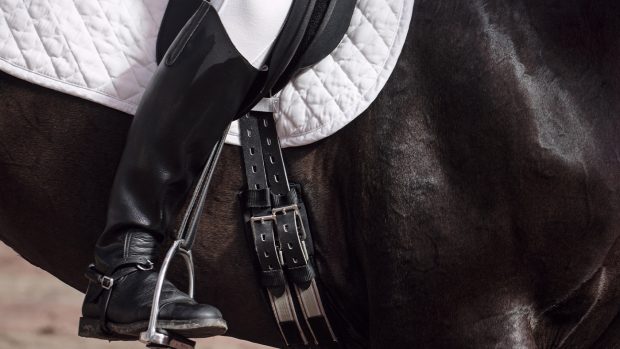Action to prevent tight nosebands being used in dressage competitions is being taken by the New Zealand equestrian federation (ESNZ).
The dressage arm of ESNZ has agreed a rule change, which alters where on the horse’s face the noseband tightness is measured.
The new rule states: “No noseband may ever be so tightly fixed that it will harm the horse. It must be possible to place one finger comfortably between the noseband and the nasal planum (front of the nose).”
Previously, the tightness was measured on the side of the face.
“The Dressage New Zealand Committee were unanimous in its view that the previous rule, which required the noseband to be loose enough to fit one finger under the nose band on the side of the face, was not adequate to prevent nosebands being fixed so tightly that they may cause harm,” Scott McKenna, Dressage New Zealand’s technical officer told H&H.
“This view was informed by the most recent scientific studies on the subject, plus the comments and advice of two veterinarians who were in attendance at the conference, including associate professor Chris Rogers from Massey University.
“Dressage New Zealand is investigating the use of a standardised measurement system to enforce this rule in a fair and consistent way and will also continue to monitor the situation to ensure the rule is effective.
“In particular we will continue to monitor whether the implemented standard of one finger on top of the nose is adequate or whether another standard, such as two fingers on top of the nose is required.”
Article continues below…
You might also be interested in:

Tight nosebands outlawed by national federation
The new rule is to be introduced from 1 January 2018 following research linking tight nosebands to mouth lesions
The Danish equestrian federation introduced a noseband tightness limit in January, which states that there must be a gap of at least 1.5cm between the horse’s nasal plate and noseband.
Officials can check the tightness of a noseband if they believe it is too tight and ask a rider to loosen it. There are sanctions for riders who refuse to loosen nosebands and for repeat offenders.
British Dressage does not specify an exact measurement relating to the noseband tightness in its 2018 rulebook, but it does state that tack must be correctly fitted to avoid pain, injury and discomfort.
In this week’s Horse & Hound magazine, out on Thursday 12 July 2018, don’t miss our ‘Rider fitness’ special including what top riders eat, fitness for across the disciplines and more.
Plus, read our interview with Royal Ascot-winning trainer Eve Johnson Houghton and in this week’s ‘Vet clinic’ we take a look at bacterial meningitis in horses. We also have reports from eventing action at Barbury, racing from Sandown Park and much more.



